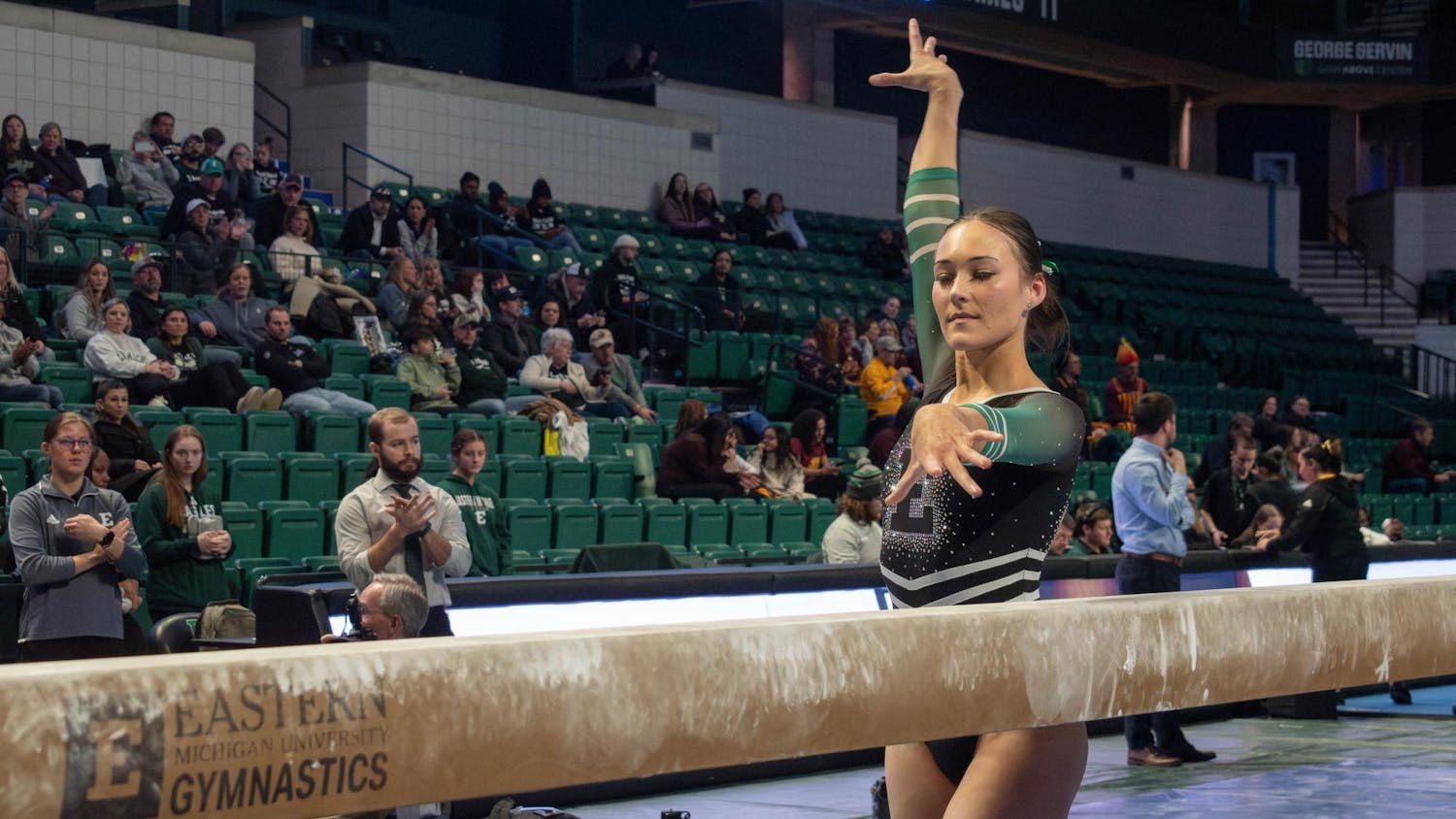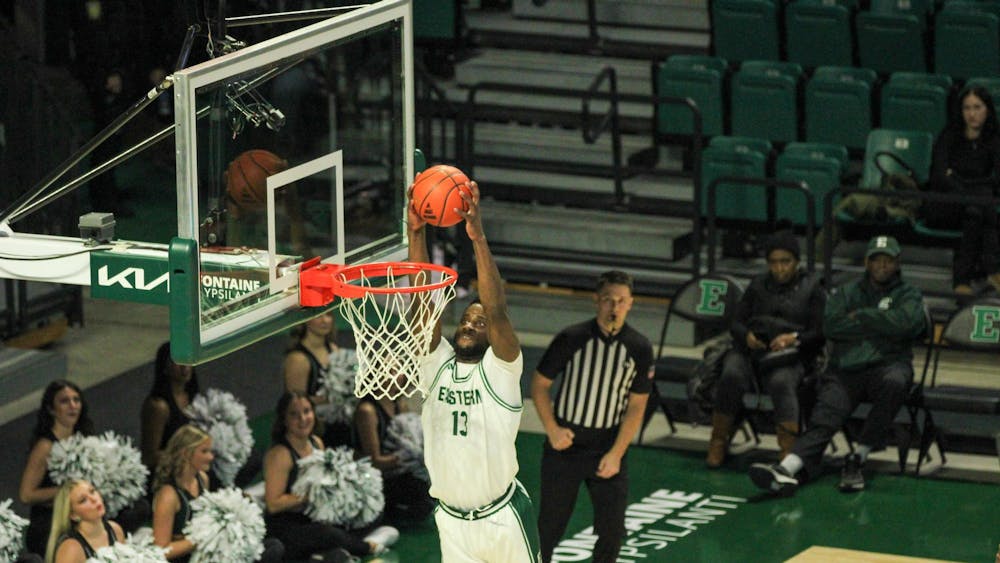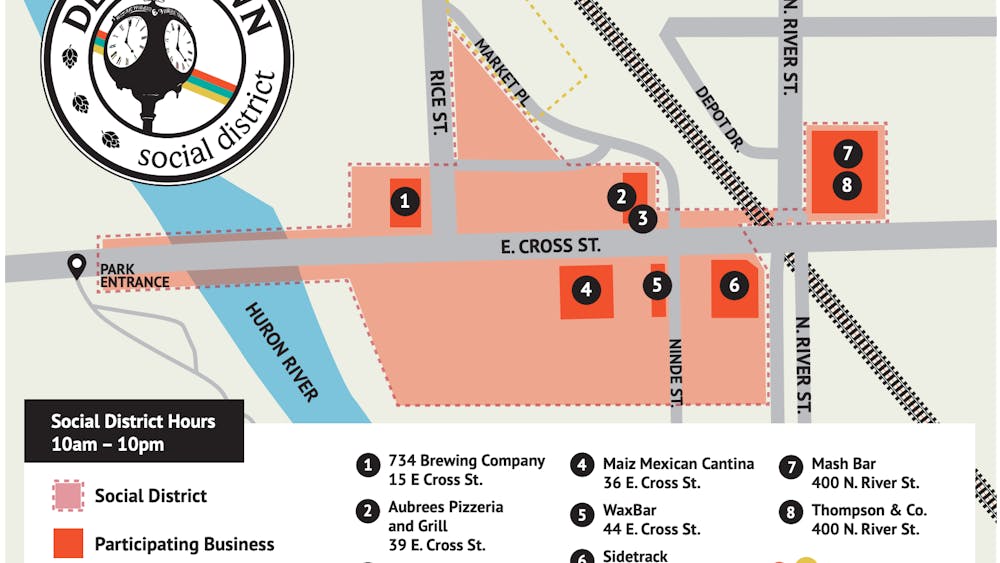Following New York Times op-ed columnist Joe Nocera’s talk in Eastern Michigan University’s Student Center on Tuesday, I did some thinking about the plan he put forth to pay student-athletes at major schools and the relatively little he said about schools like EMU, widely known as “mid-major” schools.
I thought I’d provide a response of my own which should better speak to students not only at EMU but at the rest of the mid-major schools as well as Division II and Division III schools.
The question: Why should paying student-athletes at major schools such as the University of Michigan or Michigan State University (just to name local examples) matter to a student here at EMU?
The answer: It shouldn’t, at least not while any of us are in college, and even more likely, not before our grandchildren are.
The real and honest truth is that regardless of one’s opinion of the NCAA—whether it is as a “cartel” as Nocera called it or anything else—the basic truth is the NCAA is too strong an entity for these proposed changes to realistically take place in anything less than 30 years.
In Nocera’s talk, he said the smaller schools need to “acknowledge
the reality of the situation.” While I’m pretty sure he meant the schools without as much money as the bigger schools need to acknowledge just that, I believe those who think student-athletes should be paid need to acknowledge the reality of this situation.
“There is no way this school [EMU] can afford to pay their athletes,” Nocera said.
First of all, the school is an “its,” not a “they.” (Thanks Art Brooks for that one)
Second, he’s probably right.
EMU spent roughly $23.1 million on athletics last year and made just shy of $1.5 million, according to the university’s budget.
Nocera proposed $3 million for football and an additional $3 million for men’s basketball, to be spread out across the teams.
That’s $6 million for two teams. The university spent $23 million on 19 teams, various coaches and staff and other expenses. That adds up to about $1.21 million per team.
“All the other schools [mid-majors] have to decide: ‘Do I really want to step up and pay money I don’t have?’” Nocera said.
I don’t think they want to.
A point Nocera made that I do agree with is for schools to give student-athletes six-year scholarships instead of four. I do believe in some cases, student-athletes don’t necessarily receive the quality of education in four years they might ordinarily receive if they didn’t play sports.
While I certainly believe EMU gives all of its students, both athletes and non-athletes alike, the best possible education it can, I think the least that can be done to reward those who do spend more time on the field than the rest of the student body is to help them build a safety net in case a career in professional athletics isn’t in the cards. If they can do it in four years, great; if not, why not give them some extra time?
Nocera followed that idea with one I absolutely disagree with: awarding scholarships to student-athletes in the form of cash.
First off, giving them scholarships in the form of hard money is the exact same thing as paying them.
Secondly, that already happens. It’s called a refund. When the sum total of classes and room and board equal less than the amount of financial aid awarded, the remainder is given to the student in the form of a refund.
I think while the talk was certainly eye-opening and thought provoking, talking about the “big” schools is lost on us.
EMU is not a “big” football school, it isn’t a “big” sports school in general right now, and until that does happen, coming in and preaching about the schools that are doesn’t really make a lot of sense to me.
“If conference re-alignment doesn’t ruin college sports,” Nocera said, “paying athletes won’t ruin college sports.”
He’s right about that, too.
In a column written earlier this year, Alex Alvarado, staff writer at the Echo, talked about the numerous changes being made to the makeup of the various conferences in college sports.
More changes have happened since, and I think what is going on there is much worse for college sports, financially and for the fan base, than the never-ending debate on paying the student-athletes.
Perhaps in about 30 years, the NCAA (if it is still around) will re-think its policy on paying athletes. I think anything is possible in that regard, but in the meantime, I’m not holding my breath.










